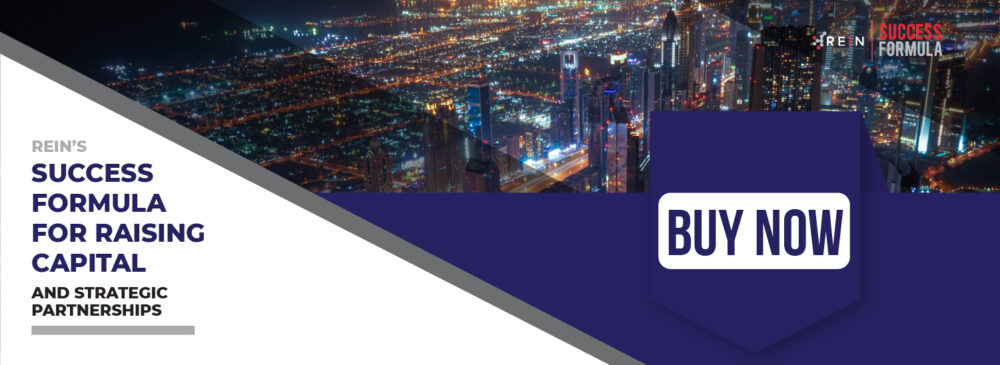How to Manage Your Time like a Millionaire

By Patrick Francey
In order to achieve your financial goals you must recognize three things: the value of time, energy, and knowledge. In order to succeed, you must also recognize the things that will stop you in your path: the true costs of your decisions, your distractions, and your reactions.
As a CEO, I have been on both sides of the pendulum; I have seen the successes of my great use of time and I have also seen how costly certain decisions have been. But that’s life and you’ve just got to accept what’s happened and move on. There was a time where a key employee decided to leave the company I am CEO in because they felt like they weren’t listened to and didn’t feel motivated in the role. While this was a big mistake on my part, we learn from it and made an employee engagement plan that we could use going forward to ensure we didn’t lose any more important figures. For those of you who are reading this now, let me assure you, this is a great use of your time!
But if you find yourself having a mental block at work and turning to the news or being bombarded by so many emails that you can’t keep up, then what you need is a plan to ensure that your days are filled with steps to success and that allow you to go home at the end of a day and feel accomplished.
It’s said it takes 21 days to create a new habit. Whatever it takes for YOU – start today. Proactively, not reactively, manage your time. Managing and leveraging your time increases your energy and your capacity to take on more.
Need a little extra help? REIN Coaches are available to keep you accountable.
A 2-Step System to Successful Time Management:
Step 1
Create your To-Do list based on tasks that support your intended outcome for the day and assign them the amount of time you intend to apply to each. A word of warning, thinking that you can accomplish 60 things will lead to you using your time to complete the easiest of those; not the most important!
When creating your list, consider the quality of the things on your to-do list and use ‘quality’ as a guide to trim the list. The highest priority should be given to the tasks that will move you and your company forward, as well as those legally required tasks, such as producing an annual report if that is a requirement of your business. When it comes to annual reports, you can enlist the help of a company like https://kaizenbrandevolution.com/annual-report-design/ to ensure the report is beautifully designed so you feel confident to present to the shareholders in such a high-stakes moment. And what about all those day-to-day tasks that ‘must’ get done? Consider delegating those to others or outsourcing them. Remember, the price you pay someone else to complete tasks could be a lot less expensive than the cost of poor time management!
Sample:
- Write ad copy re: upcoming 223 Anywhere St. vacancy – 30 minutes
- Call Accountant, re: CRA assessment – 10 minutes
- Follow up by phone with 3 potential JV partners – 45 minutes
- View property on south side – 60 minutes w/ travel
- Lunch Master Mind Meeting – 75 minutes
- Nap – 20 minutes
- Interview roofer re: new roof 12 unit (my office) – 20 minutes
- Update sophisticated binder for re-financing – 90 minutes
- Check and return e-mails – 60 minutes
- Gotta Minute? – 45 minutes
- Planning next purchase (working on business) – 45 minutes
At this point in planning do not schedule the time at which you will do the things on your list; simply create a great list and allocate how much time you will spend on each to-do. Once the list is complete and you are satisfied the things on the list are a priority, and then move on to the next step?
Step 2
Create a realistic schedule that outlines the times that you will begin and complete the tasks on your to-do list. Remember to strategically schedule your list. If you have a scheduled meeting in the afternoon, the morning might be a better time to tackle a project.
Sample:
- Write marketing ad for upcoming vacancy – 8:00-8:30
- Call Accountant, re: CRA assessment note – 8:35-8:45
- Follow up by phone with 3 potential JV partners – 8:50- 9:35
- View property on south side – 10:00-11:00 w/ travel
- Interview roofer re: roof for 12 unit (my office) – 11:05-11:20
- Lunch Master Mind Meeting – 11:30-12:45
- Nap – 12:45-1:05
- Update sophisticated binder for re-finance – 1:05-1:305
- Check and return e-mails – 1:35-2:35
- Gotta Minute – 3:00-3:45
- Planning for next purchase (working on business) – 4:00-5:00
Remember to allow for buffer or transition times from one task on your list to the next.
A written schedule helps maintain your discipline to focus on completing the tasks on your list that leverage and maximize the value of your time. These tasks and priorities become the action steps you take for executing your day. By respecting the times you have assigned to each task, you create boundaries which help avoid unproductive distractions, making it far more likely to achieve your goals. Proactive time management controls and manages the chaos that reactive management creates and, by decreasing the clutter of chaos, you increase your capacity to see opportunities that real estate investors and business owners come across on a daily basis.
Proactive Versus Reactive
By being a reactive business owner or manager, you are generally also operating a reactive business and training your staff to be the same. There are some strong indicators of whether or not this is you or your business:
- There are no set limitations on Gotta Minute leading to constant interruption.
- Technology, such as email, controls you and your business; not the other way around.
- Creating policies, procedures and systems is not a priority.
- Meetings are neither organized nor formalized: no goals, deadlines, tasks, notes, and often stray from agenda.
- There are very few formalized operational policies, procedures or efficient systems.
- The day to day operational wheel of the business is being reinvented every day.
The problem with this type of time management is that the day-to-day operations of the business, and business itself, end up running you. When you work minute-to-minute, your team will do the same, and everyone will run at less than optimal efficiency.
So, what are some ways to confront your reactive time management, change your habits, and begin controlling the efficiency of your business?
Proactive Time Management is the difference between being in the driver’s seat and passenger’s seat. With this style of time management, you take the reins (no pun intended) of your business and control everything from what gets done to when and what quality it gets done at.
How do you know if you’re a proactive time manager? Like Reactive Time Management, there are key indicators of being proactive with your time:
- Open door policy at scheduled times for Gotta minute with clear boundaries.
- Partners and staff are aware of policies for meetings: agenda, minutes of meeting, follow-up with tasks.
- Control of own schedule including deadlines.
- Written policies, procedures, and systems that are revised as needed.
- Management and staff are asked how to improve efficiencies, maximize value, ROI of time.
There are obvious benefits to maximizing your time with Proactive Time Management as opposed to being reactive to tasks. The direct control over your time correlates across your business and into the control of your profits and expenditures. Most importantly, by leading by example, your employees will adopt the same style and become more focused, more productive, and more profitable.
Email – Control It Before It Controls You
Emails have the ability to both grow your business and suck away your much valued time. First and foremost, make use of an nemail protection software to ensure the safety of your company information. This software will prevent anyone from using your information for malicious purposes. You cannot publish your business emails unless you grant permission to certain software programs on the market. The reason for this is that anyone can type into a search engine anything they want, regardless of who it is. If someone gets ahold of your email address, all your personal information will be at risk. In the worst case scenario, they might even add the IP address to the spam list by further hacking the server. It will negatively impact your business, and any emails you send to customers will also be flagged. You can check out Linode‘s blog page on this for information on how to avoid this situation in the future.
Nonetheless, emails must be dealt with carefully at all times! Touch it once or DON’T touch it! Don’t touch it if you do not intend to take action on it! I’m sure you have been in the situation where you open, read, and close an email with every intention of getting to it later that day. A few days later you receive a follow up email regarding the matter, potentially costing you a customer, a client, or a deal.
These costly mistakes can be dealt with by simply asking yourself if you have the time to deal with whatever may be in the body of an email. If it looks like a priority, either deal with it, source it out, or file away somewhere noticeable so you can tackle it at a more appropriate time.
To stay organized, create folders, either in your email account or on your desk, where you can place handouts and important emails that require attention. This will keep them from getting lost in the clutter of everything else that comes across your desk.
It’s been shown that the average office worker spends the equivalent of a month per year picking up, moving, and re-reading the same material without taking action. And that was well before email became main stream.
A great way to not get bogged down by the business emails is to train your senders to understand that you only review emails twice per day. Some great ways to do this is to set up an auto-responder that lets people know that you will be checking email twice per day. Otherwise you may want to look into other alternatives such as email marketing platforms that can automate your email processes for you, freeing up some valuable time for other business processes, for examples of email marketing software have a look into this sendinblue vs mailchimp comparison as just two examples if email marketing solutions!
An example could look like this:
Hello, thanks for the email. I will be addressing emails today between 9-10 am and 3-4 pm. Please allow 24 hours for my response. If this is an emergency, you can call my office at xxx-xxx-xxxx. Thank you for your understanding.
- Another tactic is to filter irrelevant email. Have newsletters and updates sent to a second or even third address. If you use one primary email you can filter your inbox and have those emails forwarded to a specific folder that you can address at an appropriate time.
- Create and use file-able and relevant subject lines in your emails to ensure that you’re getting noticed and opened. The subject line helps the recipient decide if the email you sent should be opened, filed, or deleted. It should also be a factor in your decision as to whether an email deserves your attention immediately or not. Change the subject line when replying or forwarding an email to make it relevant for the intended recipient, particularly if you have added a different topic in the body of the email.
- Turn off your email notification alert. Being notified of every email that arrives makes you reactive and not proactive. Even if you have the discipline to not open the email, the sound itself is a distraction.
Don’t be confused by what your most valuable asset is. Time cannot be purchased and if you use it all, you cannot renew or redeem more. That is why is it so important to manage the time you have in front of you by implementing strategic steps to help better serve you and your business. Remember, if you’re not controlling your time, someone else is.
Patrick Francey is the CEO of REIN. As a serial entrepreneur he owns many businesses and has been a real estate investor for nearly 20 years. The majority of his holdings are located in Edmonton and Grande Prairie.
{{cta(‘5510749d-c854-4e57-a2b1-ca60ac46ede8’)}}




